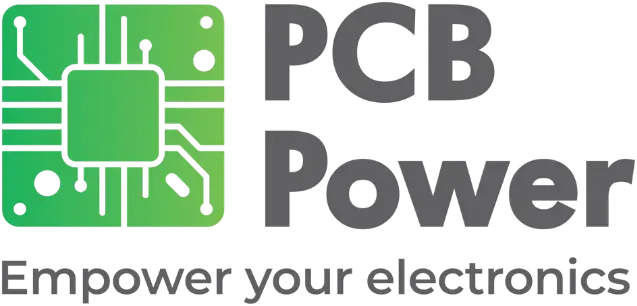
Have you ever wondered how your phone can be powerful and compact at the same time? Well, there's a super duo in the world of electronics that makes it all possible. Both blind and buried via are responsible for making it that way, as they can squeeze in complex circuitry components even with space limitations. That's how we can see smartphones' extended capabilities and functionalities. These vias conceal and allow through-hole interconnections solving the intricacy of layer-to-layer connections to preserve the sleek body we see today – let's understand about the Blind and Buried Via in PCB.
Have you ever wondered how your phone can be powerful and compact at the same time? Well, there's a super duo in the world of electronics that makes it all possible. Both blind and buried via are responsible for making it that way, as they can squeeze in complex circuitry components even with space limitations. That's how we can see smartphones' extended capabilities and functionalities. These vias conceal and allow through-hole interconnections solving the intricacy of layer-to-layer connections to preserve the sleek body we see today – let's understand about the Blind and Buried Via in PCB.What is Blind Via?
Blind vias are an aspect of PCB fabrication that involves creating connections between the outer layers and some inner layers of a printed circuit board without going through the entire board. Blind vias are only visible from one side of the board while the remaining vias are concealed within the inner layers hence the term "blind." This allows for more compact and complex designs in high-density PCBs, enabling the creation of sleek and powerful electronic devices.
- Key Benefits of Blind Via
High-Density PCBs:
Blind vias are particularly useful in high-density PCB designs with closely packed components. They enable designers to achieve complex layer-to-layer interconnections resulting in an intricate interplay of components that seamlessly coexist within a confined footprint.
Reduced noise and crosstalk:
With blind vias, signals are confined to specific layers, minimizing electromagnetic interference and crosstalk between adjacent traces, ensuring unblemished transmission paths that are vital for high-frequency and high-speed applications.
Compatibility with HDI PCBs:
High-Density Interconnect (HDI) PCBs benefit greatly from blind vias, as they support the intricate routing needed to accommodate the miniaturized components and high-speed signals in these advanced designs.
Support for multilayer designs:
Blind vias are essential for multilayer PCBs, allowing efficient and reliable connections between the various layers without resorting to traditional through-hole vias that span the entire board, thereby enhancing both signal integrity and the intricate routing necessary for complex circuitry and component integration.
What is Buried Via?
A buried via is a type of via used in printed circuit boards (PCBs) that connects one or more inner layers of the PCB without extending to any of the outer layers. Unlike through-hole vias that go through the entire board. Creating concealed conduits within the inner matrix, buried via empowers engineers to integrate intricate signal paths and power distribution channels seamlessly.
- Key Benefits of Buried Via
Space optimization:
By staying hidden within the inner layers, buried vias free up space on the outer layers of the PCB for other components and traces, allowing for a more compact and efficient design.
Compatibility with layer stacking:
Buried vias can be effectively used in multilayer PCBs, contributing to effective layer stacking and enhancing the board's overall performance.
Thermal considerations:
With fewer vias on the outer layers, the PCB's thermal performance can be enhanced, making it easier to manage heat dissipation. This strategic utilization of Buried vias proves instrumental in maintaining optimal operating temperatures in thermally sensitive designs.
Aesthetics and reliability:
The absence of vias on the outer layers gives the PCB a cleaner and more professional appearance. Additionally, eliminating vias from the exposed surfaces can improve the board's reliability.
Design Considerations and Challenges of Blind and Buried Via
The design considerations to keep in mind are as follows:
Signal integrity:
Ensure that blind and buried vias do not negatively impact signal integrity, especially for high-speed signals, by carefully planning their placement and routing.
Layer stackup design:
Design the layer stack up to accommodate blind and buried vias, considering the number of layers, their arrangement, and the impact on impedance control.
Thermal management:
Consider thermal implications, as blind and buried vias can affect heat dissipation. Plan for adequate thermal relief and a balanced distribution of vias to manage heat effectively.
Reliability and durability:
Assess the long-term reliability and durability of blind and buried vias, considering factors such as mechanical stress, thermal cycling, and potential via failure.
The challenges faced are as follows:
Manufacturing limitations:
Some PCB manufacturers may have limitations on the minimum size and aspect ratio of blind and buried vias, which could impact design feasibility.
Testing complexity:
Testing and inspecting blind and buried vias during manufacturing and assembly can be more challenging, potentially affecting quality control.
Assembly alignment:
Precise component alignment over the blind and buried vias during assembly can be difficult, potentially leading to soldering or connection issues.
Signal attenuation:
Blind vias can introduce signal attenuation due to their shorter length, requiring careful consideration for high-frequency designs.
Wrapping Up
Buried vias offer the advantage of a smaller footprint, as they are located between the inner layers of the PCB, which allows for higher routing density and potentially reduces signal interference. Moreover, they improve the board's overall reliability and thermal performance, making them suitable for high-density and high-speed applications.
On the other hand, Blind vias are particularly advantageous when dealing with complex multilayer PCBs. They connect the outer layer of the board to one or more inner layers, allowing for efficient signal transmission between specific layers. This enhances signal integrity and helps reduce the signal path length, which is especially crucial for high-frequency designs. The choice between Buried vias and Blind vias should be made based on the specific requirements of the PCB design. For designs where space is limited, and signal integrity is critical, Buried vias may be the preferred option. On the other hand, if dealing with complex multilayer boards and high-frequency signals, Blind vias offer significant advantages.
Want to amplify your circuits' performance? Choose PCB Power for flawless PCB fabrication. Check us now to explore our range of services and achieve greatness in every board.



